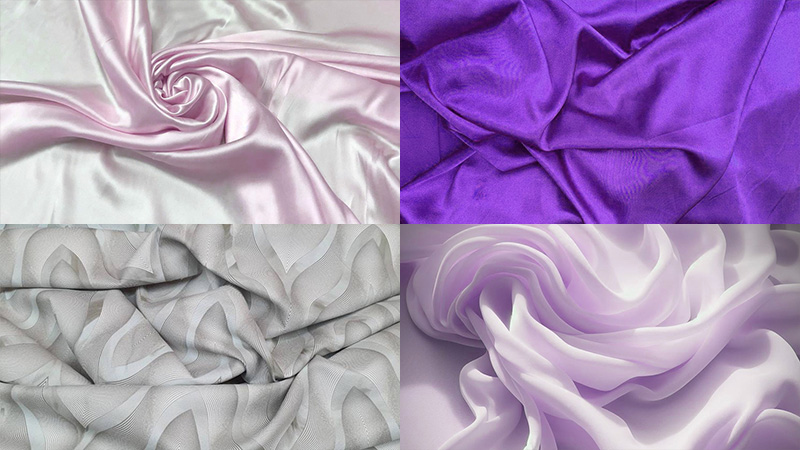
The world of fashion and interior design is a tapestry of textures, and textured fabrics from its intricate threads. These fabrics are the secret ingredient that can transform a simple outfit into a fashion statement or turn a plain room into a cozy, inviting space.
From the breezy elegance of lightweight linen to the warm embrace of heavier wool, textured fabrics offer a vast palette of possibilities. In this article, we delve into the world of textured fabrics, exploring their diverse types and unique characteristics.
Discover how these fabrics can enhance your wardrobe and living spaces, and gain insights into their care and maintenance. Texture, after all, is the tactile language of style and comfort.
1. Velvet
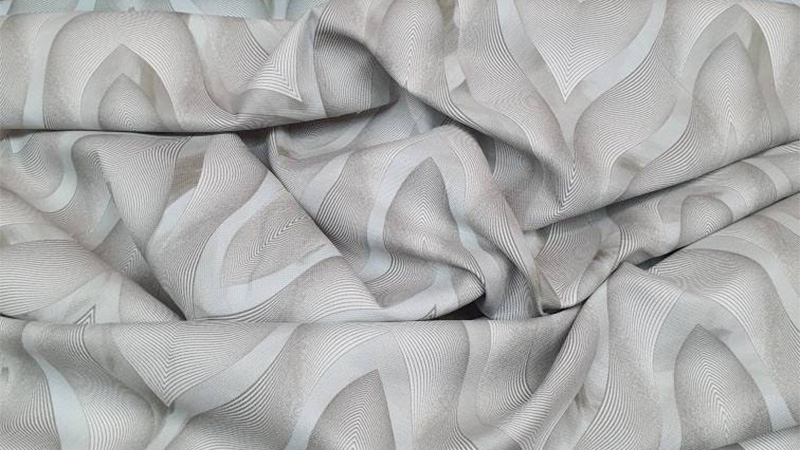
Velvet is a type of fabric that is woven and tufted together. It has an even distribution of cut threads, giving it a short and dense pile that makes it feel very soft.
This unique texture has led to the phrase “velvety” being used to describe something that is smooth and soft like velvet. Historically, velvet was mainly produced from silk, although other fabrics are now used to create velvet too.
This fabric is popular for clothing and furnishings, as it is comfortable and looks luxurious. Velvet has a timeless appeal and can be used to make beautiful garments that will never go out of style.
2. Chiffon
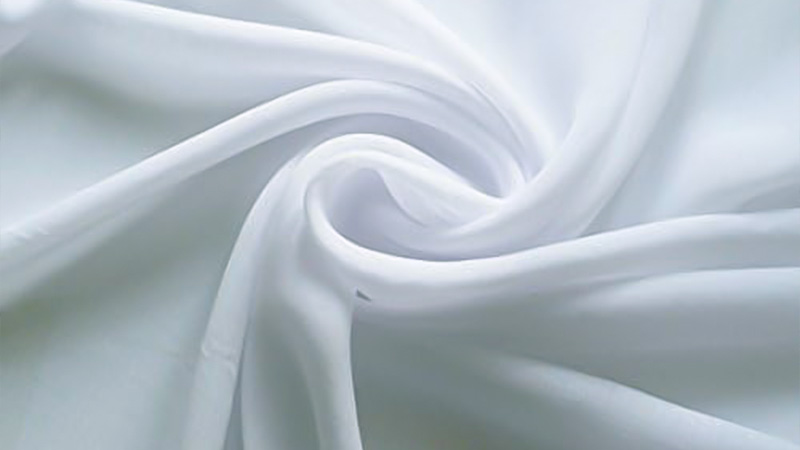
Chiffon is a lightweight, sheer fabric, which is used for a variety of clothing items. It is woven in a plain weave pattern, which means that the warp and weft threads cross over and under each other in a balanced pattern.
This creates a strong, yet light fabric that allows air to flow through easily. The fabric is made up of alternate S- and Z-twist crepe yarns. Crepe yarns are made from tightly twisted yarn, which gives the fabric a unique texture and look.
This type of yarn also has the advantage of being more durable than standard yarns. Chiffon is often used for evening and formal wear due to its delicate appearance and feel. It is also a popular choice for bridal gowns and other special occasion garments.
3. Brocade
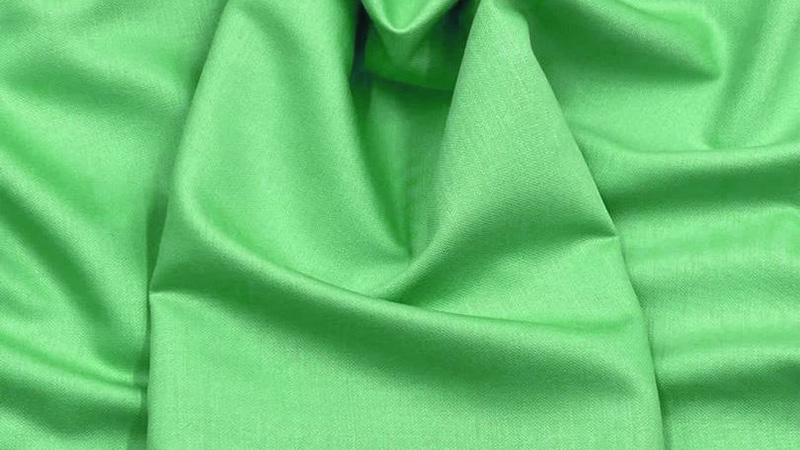
Brocade is an ornate type of fabric that is created using a shuttle-weaving technique. It is usually made from luxurious materials, such as silk, but can also feature metallic threads, such as gold and silver.
The result is a fabric that is highly decorative, with intricate patterns and designs that are often quite striking. The fabric is often used to make formal garments, such as eveningwear, but it can also be used to adorn upholstery or curtains.
Brocade is a centuries-old technique that is still popular today, and its ornate nature adds a touch of elegance and sophistication to any garment or interior design..
4. Crêpe
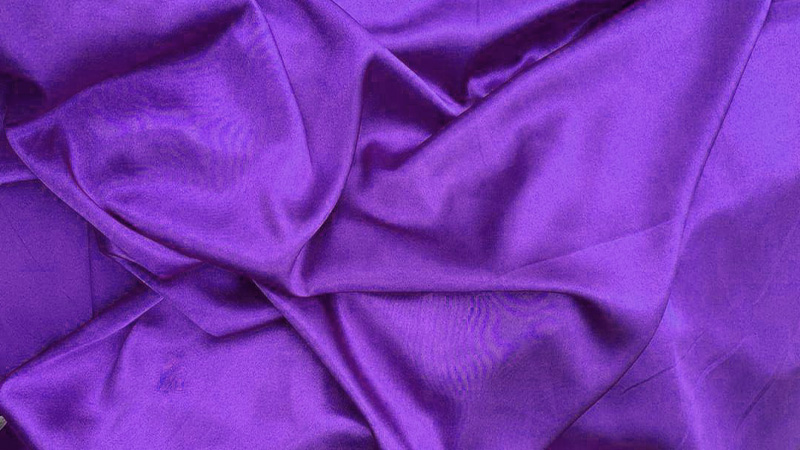
Crêpe is a type of fabric made from silk, wool, or synthetic fibers. It is characterized by its crisp, crimped texture. It is sometimes referred to as “crape”, particularly when it is used in mourning garments. Historically, the fabric has also been known as “crespe” or “crisp”.
Crêpe has a long history, with its origins dating back to ancient China, where it was used in robes and other apparel. Today, it is still used for a variety of purposes, from fashion to interior design.
It is a popular choice for evening wear, special occasions, and even bridal gowns. Crêpe fabric is also used for curtains, tablecloths, and other decorative items. Its unique texture can add texture and dimension to a space, making it an ideal choice for modern home décor.
5. Flannel
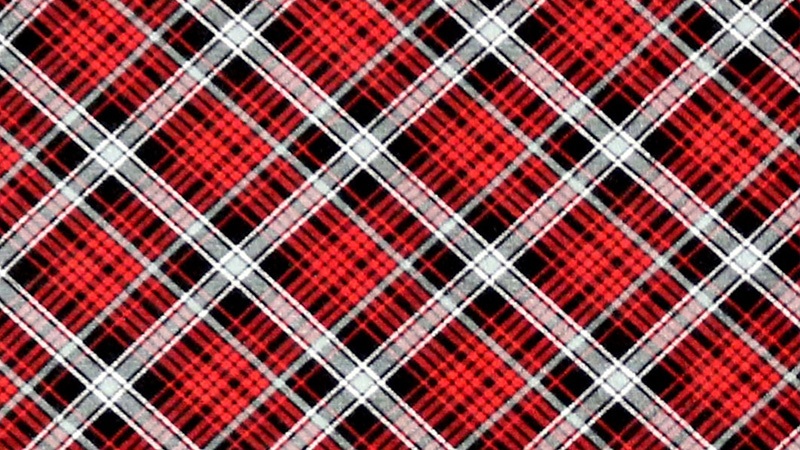
Flannel is a type of fabric that is soft to the touch and can come in a variety of different weights. It was historically made from carded wool or worsted yarn but now is made from a wide variety of materials, such as wool, cotton, and synthetic fibers.
Flannel is a popular fabric for many items of clothing, including tartan items, shirts, coats, blankets, bed sheets, and sleepwear.
The fabric is warm and durable, making it an ideal choice for these types of garments. Flannel is also a popular choice for quilting and crafting projects due to its softness and thickness.
It is a versatile fabric that can be used in many different ways to create unique and beautiful items.
It is also relatively easy to care for, as it is usually machine washable and can be tumble-dried. Overall, flannel is a great fabric choice for a range of different items, due to its durability, warmth, and softness.
It is easy to care for and is available in a variety of different colors and weights, making it a popular choice for quilting, crafting, and clothing.
6. Corduroy
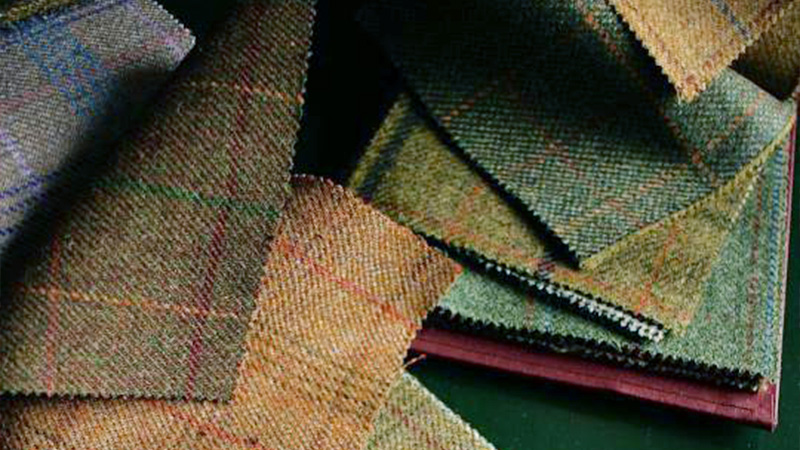
Corduroy is a unique type of fabric that is characterized by its distinct raised ridges, known as “cords” or “wales.” The texture of modern corduroy is composed of tufts of fabric that are held together in a channel.
Corduroy and velvet have a common ancestor – fustian fabric – and the similarities between them are evident in their texture. Corduroy appears to be constructed from many cords, which are arranged in a parallel configuration.
This design helps to create the unique texture and appearance of corduroy fabric. The ridges are visible because the fabric is made up of rows of cords that are slightly twisted or looped over each other.
This texture is sometimes referred to as a “corduroy effect.” The ridges are usually uniform in size and color, giving corduroy a distinctive look that is unlike any other fabric.
7. Denim
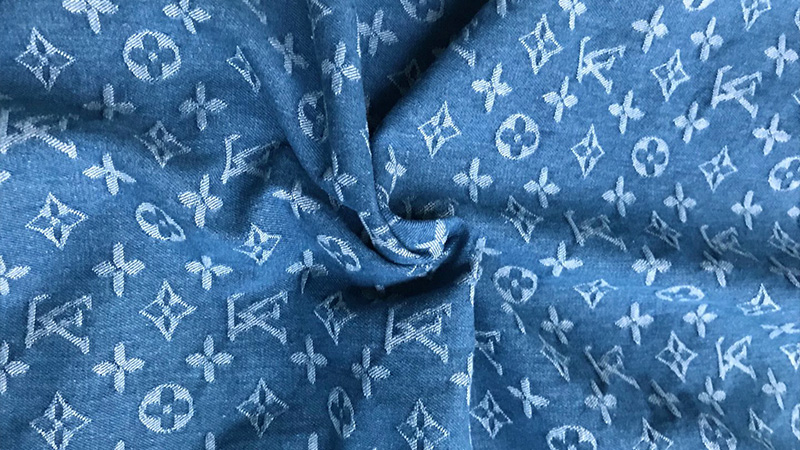
Denim is a type of fabric that is known for its durability and versatility. It is made from cotton, which is a natural fiber that is known to be strong and resistant to wear and tear. Denim is made by weaving two or more warp threads with a weft thread in a twill weave pattern.
This type of weaving creates a diagonal ribbing on the fabric, which gives denim its distinct look and feel. The weave also helps to make the fabric more resistant to tearing and fraying.
Denim is an incredibly popular fabric and can be used to make a variety of items, including jeans, jackets, shirts and accessories. It is a classic material that is both fashionable and functional.
8. Chenille
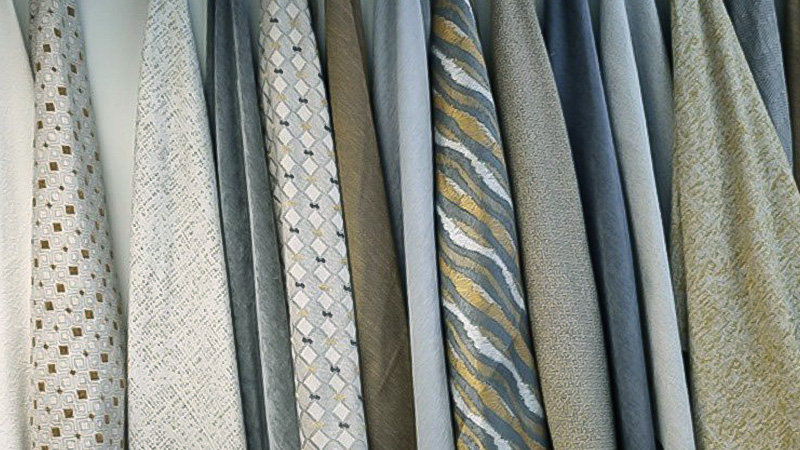
Chenille is a luxurious type of yarn, made from a variety of threads and materials. It is a delicate and soft material that is often used to make items like blankets and upholstery.
The unique texture of chenille is made by weaving the yarn in a looped pile, which gives it the appearance of a fuzzy caterpillar. This is why the French word for caterpillar, “chenille,” is used to describe this type of yarn.
The origins of chenille can be traced back to the 1600s and it has been used to create soft, beautiful fabrics ever since. Chenille fabric is popular for making items like bedspreads and throws because of its plush texture and warmth.
It is also a great choice for upholstery and drapery due to its durability. Chenille is a versatile fabric that can be used to make items for both home décor and apparel.
It is known for its softness and is popular for making items like scarves, hats, and sweaters. Chenille yarn comes in a variety of colors and textures, making it a popular choice for craft projects. It is often used to make blankets, pillows, and clothing.
It can also be used to create pieces of art, such as wall hangings and tapestries.
Chenille is an easy material to work with and can be used to create intricate designs and patterns. Chenille is a luxurious yarn that has been used for centuries to create beautiful fabrics and garments.
Its unique texture and durability make it a popular choice for a variety of projects. Its name, which comes from the French word for caterpillar, is a reminder of the soft and fuzzy texture of the yarn which resembles the fur of a caterpillar.
9. Terrycloth
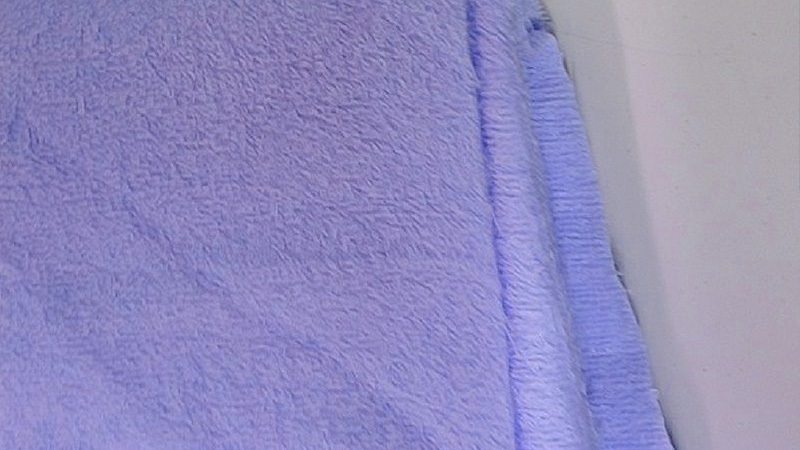
Terrycloth, also known as terry cloth, terry cotton, terry toweling, terry, terry towel, Turkish toweling, or simply toweling, is a type of fabric that is used for a variety of purposes.
It is a strong, absorbent fabric that is woven with many protruding loops of thread, giving it the ability to absorb large amounts of water.
It is a popular choice for making towels, bathrobes, and other clothing items that require absorbency. Terrycloth is produced by weaving or knitting, two sets of threads together.
The first set of threads is made of thicker, coarser yarns, while the second set consists of thinner, finer yarns.
This combination creates the raised, looped texture of the fabric, which is what gives it its abilities to absorb water. Terrycloth is a durable fabric that can withstand frequent washing and drying.
It is also known for its comfort and softness, making it a popular choice for towels and bathrobes.
It is available in a variety of colors, patterns, and textures, allowing it to be customized to meet individual needs. Overall, terrycloth is a fabric that is highly versatile and absorbent and is used in a variety of applications.
Its ability to absorb large amounts of water, combined with its comfort and durability, makes it an ideal fabric for creating towels, bathrobes, and other clothing items.
10. Damask
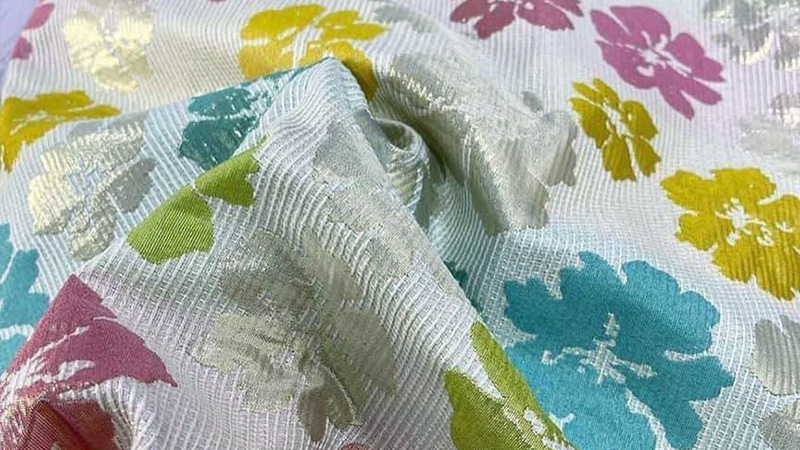
Damask is a type of fabric that is characterized by its distinct patterning. It is made from a variety of different fibers, including silk, wool, linen, cotton, and synthetic fibers. The pattern is created by a particular weaving technique called satin weave.
This involves using one warp yarn and one weft yarn, with the pattern being formed in the warp-faced satin weave and the ground in weft-faced or sateen weave. The weft yarn is the yarn that is woven over and under the warp yarn, which runs along the length of the fabric.
The pattern is created by using a combination of different thread counts, densities, and colors. The pattern is very intricate and often has a glossy sheen. Damask fabrics are usually reversible, meaning that the pattern appears on both sides of the fabric.
Damask fabrics are popular for home decor and clothing. They are often used in upholstery, drapery, and bedding. They are also used for making wedding dresses and formal gowns. The fabric is durable, and the patterns can last for many years.
Damask fabrics are available in a wide range of colors and designs, making them versatile for many different types of projects.
11. Silk
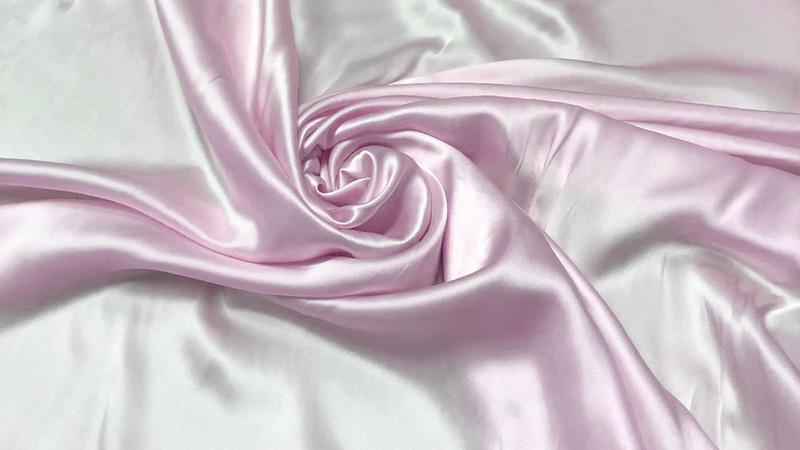
Silk is an incredibly unique and valuable natural fiber, which is produced by certain insect larvae. The most well-known type of silk is obtained from the cocoons of the mulberry silkworm, which is scientifically known as Bombyx mori.
These caterpillar-like larvae are reared in captivity in order to harvest the silk from their cocoons. Silk is a protein fiber, composed mainly of a substance called fibroin.
Fibroin is the component of silk which is then woven into textiles to produce the beautiful fabric that is so highly sought after.
This luxurious and strong fabric has been used to make clothing and other items for centuries, and its popularity remains unchanged in today’s fashion scene.
Silk is an extremely versatile fiber, and it can be used to create a variety of different garments, from wedding dresses to everyday blouses. Its unique properties make it a popular choice for both casual and formal events.
12. Cotton
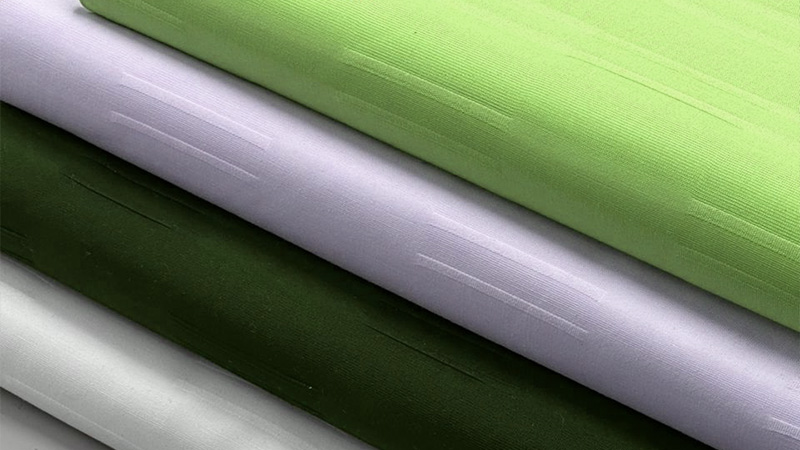
Cotton is a natural fiber that is used in a variety of products from clothing to bedding. The fiber is derived from the bolls or protective cases, of cotton plants of the genus Gossypium in the mallow family Malvaceae.
Cotton is a soft and fluffy fiber and is almost pure cellulose. It may contain small amounts of additional substances such as waxes, fats, pectins, and water. The process of harvesting cotton includes picking the bolls and separating the fibers from the seeds.
The fibers are then spun into yarn or thread and used to create a variety of fabrics and items. Cotton is an extremely versatile fiber that is used in a wide range of products, from casual wear to high-end fashion.
It is also used in home decor, furniture, and bedding, as well as in medical and industrial applications..
13. Taffeta
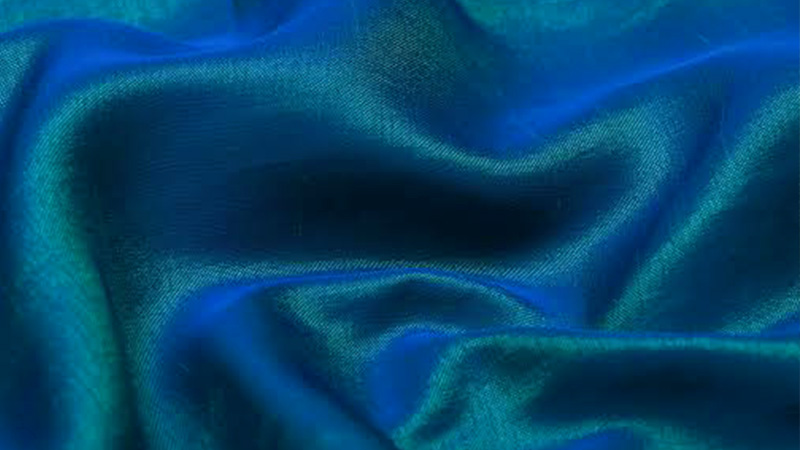
Taffeta is a type of fabric that has a smooth and crisp texture. It is made from a variety of materials, including silk, cuprammonium rayons, acetate, and polyester.
The origins of the word “taffeta” can be traced back to Persian, where it was originally known as tāfta, which translates to “silk” or “linen cloth”.
From there, it made its way into Old French and Old Italian before becoming a part of Middle English. Taffeta is a popular fabric used in garments, curtains, upholstery, and a variety of other items.
It is known for its elegant drape and sheen, and it is often used for special occasion garments such as wedding dresses and ball gowns.
It is also sometimes used to create a shimmering effect in costumes and theater sets. Due to its unique weaving process, taffeta is a very strong fabric that is resistant to tearing and stretching.
This makes it an excellent choice for making items that need to be durable, such as curtains and upholstery.
It is also relatively easy to clean and maintain, making it a great choice for any project. Overall, taffeta is a versatile and elegant fabric that is perfect for a variety of projects.
Its unique weaving process makes it strong and durable, while its beautiful sheen and drape make it perfect for special occasions. Its origins in Persian make it a truly timeless fabric that has been enjoyed by people for centuries.
14. Tweed
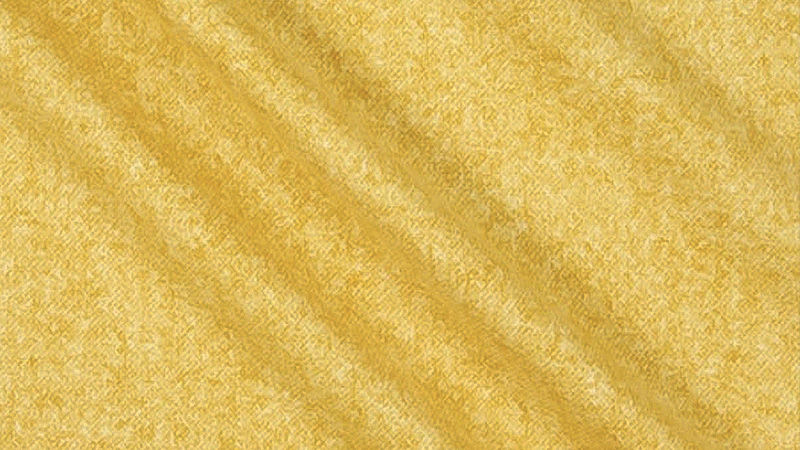
Tweed is a popular fabric used in clothing due to its rough, yet soft and flexible texture. It has a weave that resembles cheviot or homespun but is more closely woven.
Tweed is typically woven with a plain weave, twill, or herringbone structure, which provides a unique texture and appearance. To create a unique color effect in the yarn, manufacturers often mix dyed wool before spinning it into yarn.
This allows for a wide range of colors and designs to be created from the fabric. Tweed is often used to create items of clothing such as jackets, trousers, and skirts, and is a popular choice among fashion designers due to its versatility.
15. Burlap
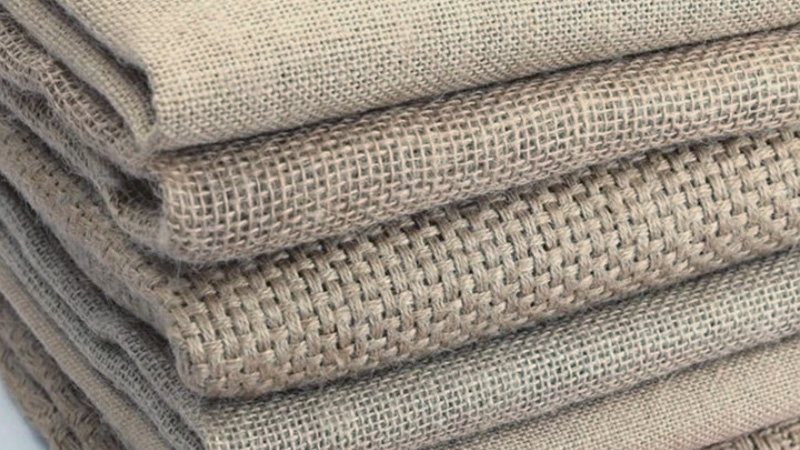
Hessian is a type of woven fabric with a rough, rustic texture, which is made from vegetable fibers. It is commonly used in the United States and Canada as a material for burlap, and in Jamaica and the wider Caribbean as crocus.
The fibers used in the production of Hessian are usually derived from the skin of the jute plant or sisal leaves. The properties of Hessian make it well-suited for many different applications, including bags, sacks, and packaging.
It is also used for curtains, furniture coverings, and even apparel. Hessian is a strong, durable material that is resistant to moisture and decay, making it an excellent choice for items that need to be stored for extended periods of time.
Furthermore, it is also a relatively affordable material, making it a popular choice among many businesses and consumers.
16. Georgette
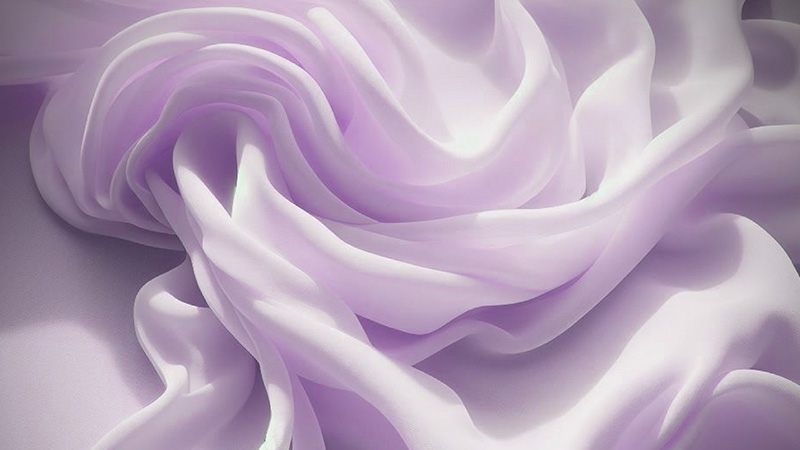
Georgette is a type of fabric that is light and sheer, with a distinctive dull finish. It is named after the French dressmaker Georgette de la Plante who lived in the early 20th century. The fabric is made from highly twisted yarns, typically derived from silk.
The special crinkled texture of Georgette is created by alternating S- and Z-twist yarns in both the warp and weft. This method of weaving creates a unique look that is not found in other fabrics.
Georgette is often used for making garments such as dresses, blouses, and skirts, as well as theatrical costumes and drapery. It is also popular for use in home decor, including curtains and upholstery.
Georgette is an elegant and versatile fabric that is sure to add a touch of class to any design.
17. Organza
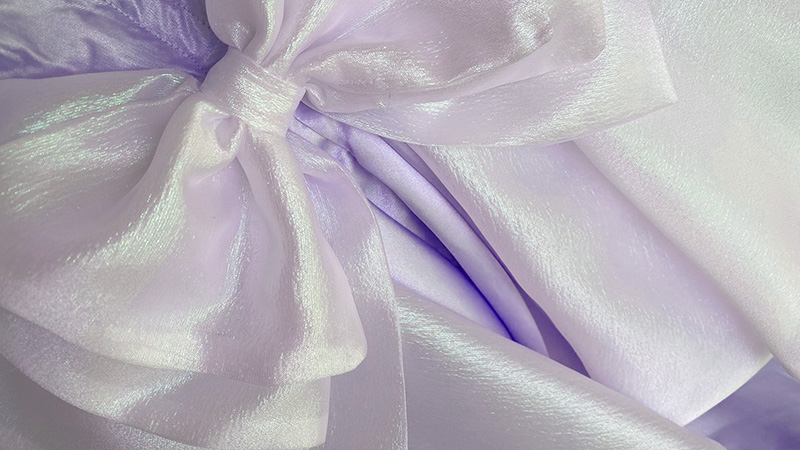
Organza is a delicate fabric used for a variety of applications, such as clothing, decoration, and even crafts. It is made from a thin plain weave, which results in the fabric being both sheer and lightweight.
Traditionally, organza was made from silk, although this has changed in recent years. Today, many manufacturers make organza from synthetic filament fibers, such as polyester or nylon.
These synthetic fibers are less expensive and easier to work with but don’t have the same luxurious feel as the original silk organza. Silk organza is still produced, however, by a number of mills along the Yangtze River and in the province of Zhejiang in China.
Here, the fabric is woven by hand, resulting in a higher-quality product. This silk organza is still used in many high-end fashion items, such as wedding gowns and evening wear, due to its luxurious feel and delicate appearance.
18. Poplin
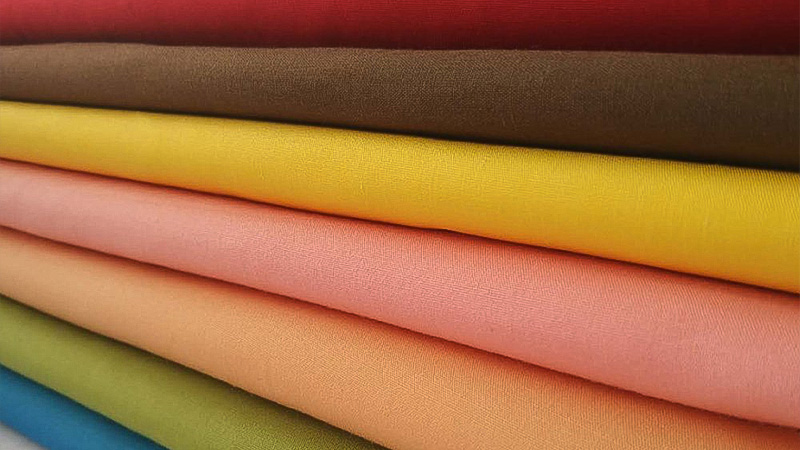
Poplin, also known as tabinet, is a type of fabric that is made with a combination of wool, cotton, or silk fibers. This fabric is composed of a vertical warp and horizontal weft, which are crossed together in a plain weave.
As a result of this weave, the fabric has a unique texture that looks like cords running along the surface. The versatility of this fabric makes it an ideal choice for a variety of different clothing and textile items, including dresses, skirts, blouses, and jackets.
Additionally, poplin can be used to make upholstery, curtains, and other home goods. Because of its strength and durability, poplin is a very popular fabric for everyday clothing and accessories.
19. Felt
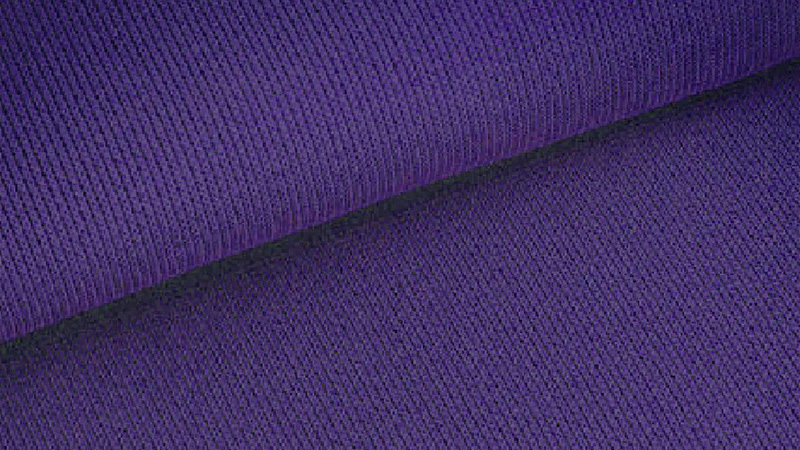
Felt is a textile material that is created through a process of matting, compressing and pressing fibers together.
Natural materials such as wool and animal fur can be used to create felt, as well as synthetic fibers like petroleum-based acrylic or acrylonitrile and wood pulp-based rayon.
Blended fibers, which are a combination of natural and synthetic fibers, are also commonly used when creating felt. This process results in a fabric that is thick, durable, and can be used for a variety of purposes.
Felt is often used in the production of hats, coats, and other garments, as well as for craft and interior design projects. It is also used in the automotive and aerospace industries, where it is used for insulation and soundproofing.
Felt is an incredibly versatile material that can be used for a variety of purposes.
20. Broadcloth
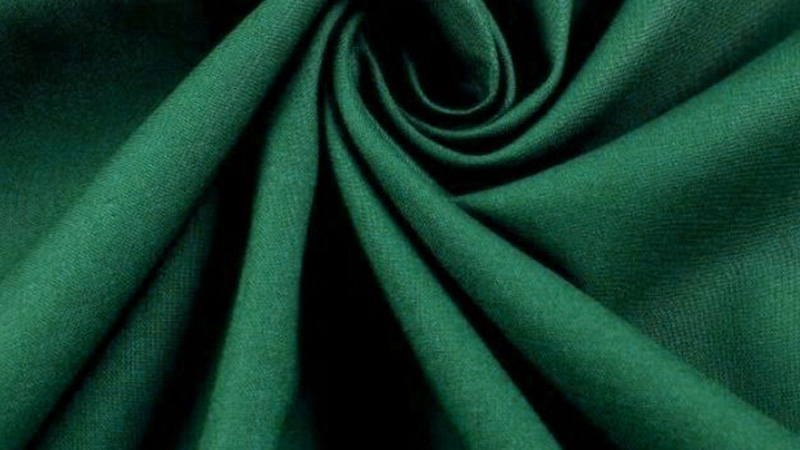
Broadcloth is a type of fabric that has been around for hundreds of years. It is a heavy, plain woven material, usually made from wool. Since its first production, it has become known for its density and strength.
The defining feature of a broadcloth is not its finished width but rather the fact that it is woven much wider than its final width. This is because it has to be milled heavily in order to shrink it down to the desired size.
This process gives it a distinctive texture that is both strong and durable. Broadcloth is a popular choice for garments such as suits and dress shirts due to its durability and classic look. It is also often used in upholstery and curtains for a more formal look.
Broadcloth is an important part of the fabric industry, with its long history and versatile applications.
21. Lace
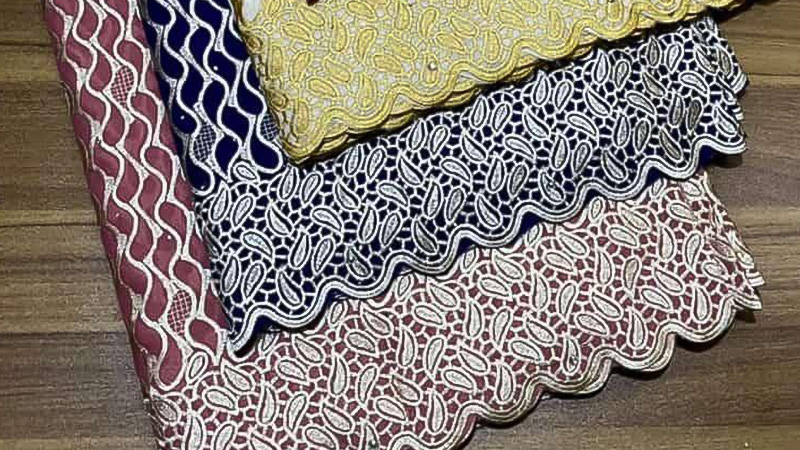
Lace is a beautiful and intricate fabric that is used to make a variety of garments, from wedding dresses to baby blankets. It is made from yarn or thread that is woven together in an open, web-like pattern.
This pattern can be created by hand, using a needle and thread to stitch the design, or by machine. Needlelace is one type of lace that is made by using a needle and thread to create a pattern.
This type of lace is usually more delicate than other types of lace and can be used to make intricate and detailed designs. Bobbin lace is another type of lace that is made using bobbins and a special pillow.
The bobbins are used to weave together threads of yarn or thread to create a pattern. This type of lace can be used to create a range of decorative patterns and designs. In addition to needlelace and bobbin lace, there are other types of lace such as knitted and crocheted lace.
Knitted lace is created by using two needles to interlock yarn or thread in a way that creates an open, web-like pattern. Crocheted lace is made by using a crochet hook and yarn to create a pattern. This type of lace is usually thicker and sturdier than other types of lace.
No matter what type of lace is used, it can be used to make a range of garments and accessories. Lace is a versatile fabric that can be used to create delicate, intricate designs for a variety of occasions.
22. Fleece
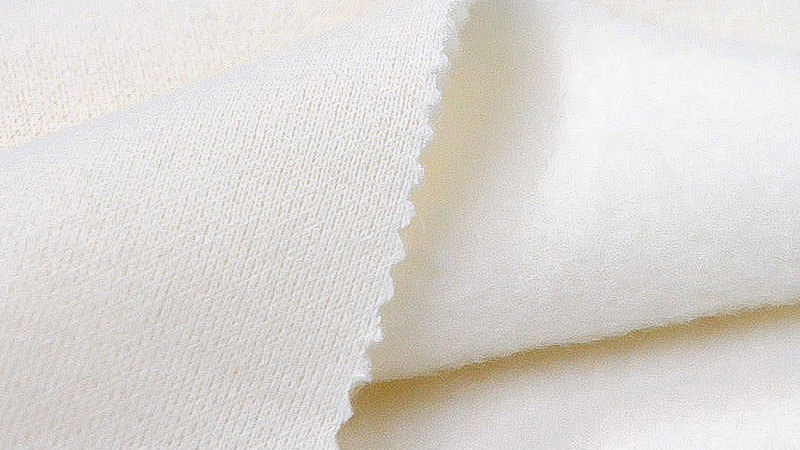
Polar fleece is a synthetic fabric that is known for its soft, fuzzy feel and superior insulation. It is commonly used in a variety of apparel items, such as jackets, sweaters, hats, and blankets.
It is made from polyester, a synthetic material made from petroleum, which makes it lightweight, durable, and resistant to wrinkles. The fabric is also breathable and moisture-wicking, so it helps keep you warm and comfortable in cold weather.
It is also machine-washable and can be easily dried on a low heat setting. The fabric’s texture makes it ideal for outerwear, providing a cozy yet stylish look that is perfect for outdoor activities like hiking, skiing, and camping.
Polar fleece is a great option for those who want to stay warm while looking fashionable.
23. Satin
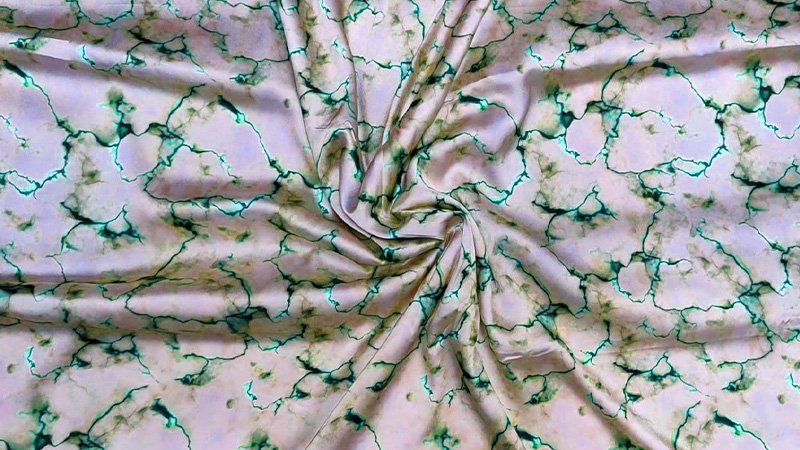
A satin weave is a special kind of fabric weave that produces a glossy, smooth and lustrous material. It has a bright and glossy top layer and a dull back. This type of weave is not very durable, as it is more prone to snag than other types of weaves.
It is one of the three main types of fabric weaves, the other two being plain weave and twill weave. Plain weave is the most basic type of weave, where the weft and warp threads cross over and under each other in a simple, alternating pattern.
This creates a strong, durable fabric, but it lacks the sheen and softness of the satin weave. Twill weave is similar to plain weave, but the weft and warp threads cross over and under each other in a diagonal pattern.
This type of weave also produces a strong and durable fabric, but it has a more distinct texture and pattern than plain weave. The satin weave produces a much softer and shinier fabric than the other weaves.
The thread is woven in such a way that the warp threads are pushed up to the top of the fabric, creating a glossy top surface with a dull back. This type of weave is ideal for creating soft, glossy materials like silk, satin, and chiffon.
However, the satin weave is not as durable as the other two weaves, as it is more prone to snagging and tearing.
24. Percale
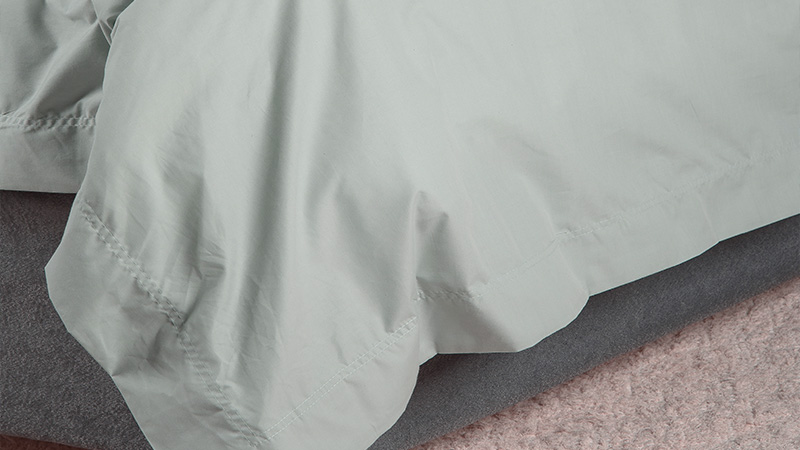
Percale is a type of fabric that is tightly woven in a plain-weave pattern, making it an ideal choice for bed covers. Its high thread count of 200 or more makes it much firmer than other types of fabric used for bedsheets.
It has a medium weight, is smooth to the touch, and doesn’t have a glossy sheen. Percale is also known for its durability, as it holds its shape and color even after multiple washes. Additionally, it is very breathable, making it a comfortable and cooling choice for bedding.
All of these qualities make percale a popular choice for bed linens.
Conclusion
Textured fabrics stand as a versatile and inspiring choice for individuals seeking to elevate their garments, upholstery, and creative projects.
The diverse array of weaves, colors, and textures available in textured fabrics empowers enthusiasts to craft one-of-a-kind pieces, each bearing a distinctive allure.
Whether your preference leans towards a subtle, sophisticated texture or a bold, attention-grabbing statement, textured fabrics offer a vast spectrum of options to cater to your unique requirements.
As you embark on your creative journey, remember that the world of textured fabrics is a boundless realm where innovation and expression thrive, promising endless opportunities to bring your artistic visions to life.
Leave a Reply